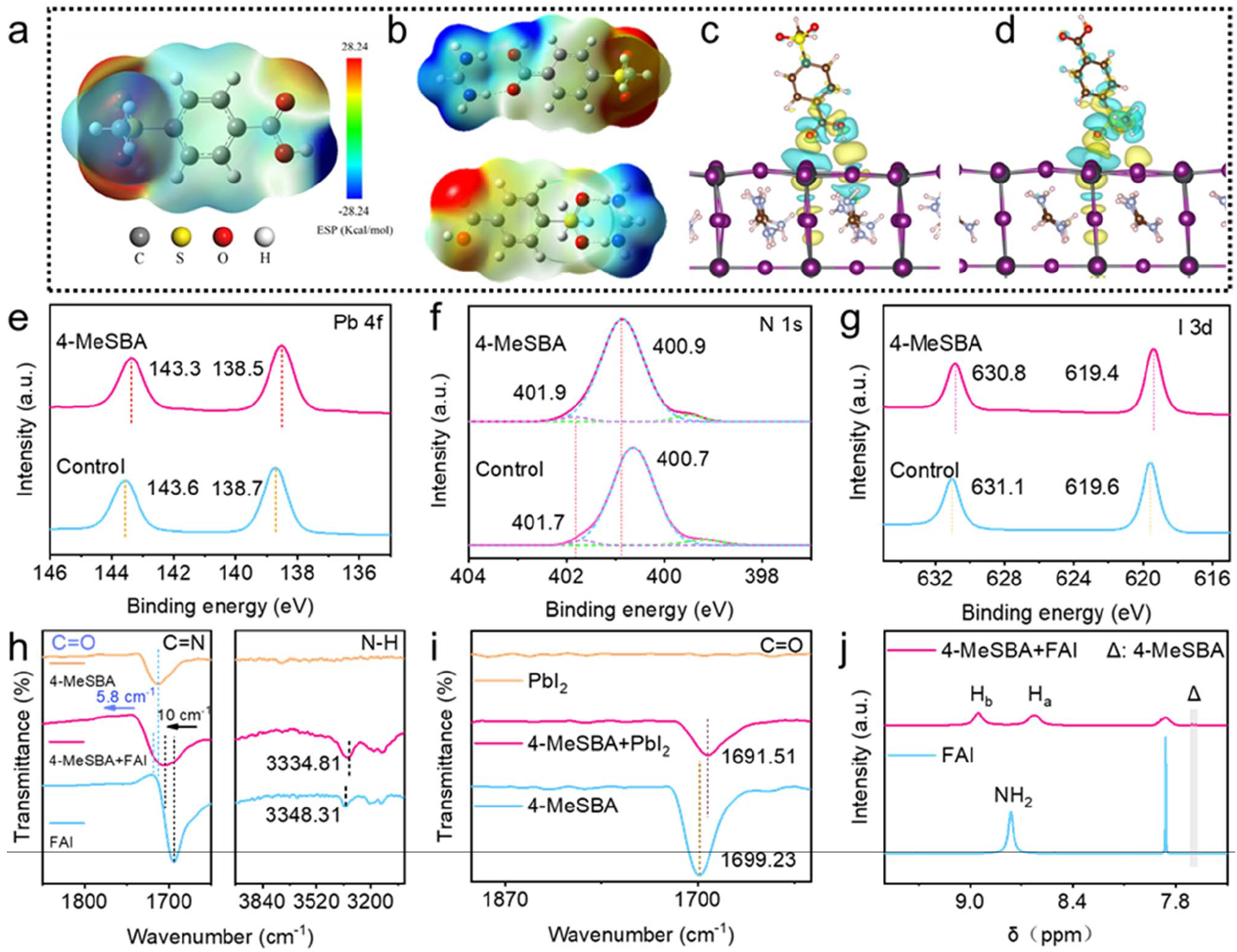Congratulations, Yiqing, on your first paper at ANU as a first-year PhD student! The C=O and S=O groups in 4-methylsulfonylbenzoic acid (4-MeSBA) provide strong binding with the perovskite grains, enabling high-efficiency (certified 26%) and high-stability (T92≥1200h under one-sun continuous illumination, 40 ℃, RH 35-45%, Vmpp tracking) perovskite solar cells.
Abstract: The emergence of intrinsic defects during the growth of perovskite films severely constrains further advancements in the efficiency and stability of perovskite solar cells (PSCs). To address the challenge of mitigating defects in perovskite films, we incorporated 4-methylsulfonylbenzoic acid (4-MeSBA), a multifunctional additive, into the perovskite precursor solution. This additive significantly reduces defects in perovskites through a molecular locking mechanism. Specifically, the molecule’s two oxygen-bearing functional groups engage in simultaneous bonding interactions with uncoordinated lead ions, formamidine species, and iodine atoms present at the grain boundaries of the perovskite. Furthermore, the synergistic effect mediated by 4-MeSBA through hydrogen bonding and coordination interactions not only facilitates more controlled crystal growth of perovskites but also enhances the overall quality of the perovskite film, thereby contributing to improved performance of PSCs. Indeed, we achieved a champion PSC with a power conversion efficiency of 26.35% measured in-house, along with a certified efficiency of 26.00%. The encapsulated 4-MeSBA-based PSC retained over 92% of its initial efficiency after 1200 hours of maximum power point tracking in air.
This work is published in J. Mater. Chem. A.
Acknowledgement
This work is a result of close collaboration of experimentalists (Prof Jun Peng’s group) and theorists (the nexSAS group). We acknowledge the financial support from ACAP and the computational resource from the Pawsey supercomputing centre of Australia.

